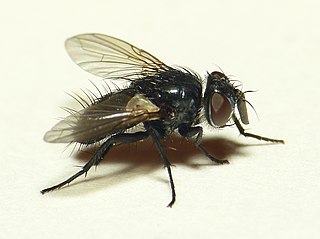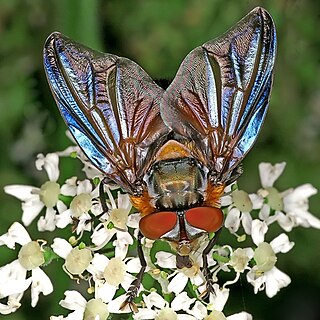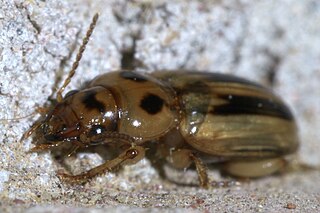
Jacques Marie François Bigot was a French naturalist and entomologist most noted for his studies of Diptera. He was one of two sons of physician Jacques Bigot (1757-1842) and Marie Françoise Euphrosine Bigot (1791-1845). Bigot was born in Paris, France, where he lived all his life, though he had a property in Quincy-sous-Sénart near Brumoy acquired in 1874, and where he died after an attack of influenza. He became a member of the Entomological Society of France in 1844, and his first paper was published in its Annals in 1845, as was most of his later work. Bigot was a prolific author, describing more than 1,500 species of Diptera in more than 400 scientific publications and, like Francis Walker, his work was the subject of much later criticism.

The Ventuari River is the largest tributary of the Orinoco in southern Venezuela. The Ventuari flows from south-central Venezuela in the Guiana Highlands southwest into the Orinoco River. It is 520 km (320 mi) long and its major tributary is the Manapiare River.

Charles A. Alluaud was a French entomologist.
Saccopheronta is a genus of flies in the family Dolichopodidae. It is considered a synonym of Medetera by some authors, and a valid genus by others.

Nosodendridae is a family of beetles, with less than a hundred species in three extant genera, which are found worldwide. Nosodendron, the largest genus, is found in forests and attracted to yeast generated slime on the wounds of trees, and likely consumes fermented substances as well as fungi and microorganisms. Several additional genera and species are known from the fossil record. Nosodendridae is considered to be an isolated lineage within Polyphaga, being the sister group to the clade containing Staphyliniformia, Bostrichoidea and Cucujiformia.
Louis Beethoven Prout (1864–1943) was an English entomologist and musicologist.

Blondeliini is a tribe of parasitic flies in the family Tachinidae. Larvae are parasitoids of other insects, mostly beetles and caterpillars. Although nearly cosmopolitan, its greatest diversity is in the New World and especially in South America.

Phasiinae is a subfamily of flies in the family Tachinidae. Except for the small tribe Strongygastrini members of this subfamily attack only Heteroptera.

Kenyacus is a genus of beetles in the family Carabidae first described by Charles Alluaud in 1917.

Loxoncus is a genus in the beetle family Carabidae. There are more than 30 described species in Loxoncus.

Siopelus is a genus of beetles in the family Carabidae, found mainly in Africa.
Agonidium is a genus of beetles in the family Carabidae, containing the following species:
Liagonum is a genus of ground beetles in the family Carabidae. There are more than 50 described species in Liagonum, most found in Africa.
Abacetus alluaudi is a species of ground beetle in the subfamily Pterostichinae. It was described by Tschitscherine in 1899. A. alluaudi is found in Cote d'Ivoire, Africa. A. alluaudi is a shiny black beetle, with an unusual upper jaw (mandible) which is more likely found in Caelostomus species.

Adrien Frédéric Jules Dollfus was a French carcinologist known for his work with terrestrial isopods, including crustaceans and trilobites.

Hemierana is a genus of beetle in the family Cerambycidae, from North America. It contains two described species:

Plagiolepis alluaudi, the little yellow ant, is a species of Plagiolepis. The species is native to Madagascar, an island off the coast of East Africa. It is known to be a widespread invasive species. In an effort to distinguish its name from other small and yellow species of ant it may be called Alluaud's little yellow ant, after Charles A. Alluaud.

Hecalini is a tribe of leafhoppers in the family Cicadellidae. There are about 24 genera and over 180 described species divided into two subtribes in Hecalini.

Hermatobates is a genus of wingless marine bugs placed as the sole genus in the family Hermatobatidae that are sometimes known as coral-treaders. They are quite rare and known only from coral reefs in the Indo-Pacific region. During low tide, they move over the water surface not unlike the more familiar water-striders around coral atolls and reefs and stay submerged in reef crevices during high tide.

Stenolophini is a tribe of ground beetles in the family Carabidae. There are more than 30 genera and 690 described species in Stenolophini.














